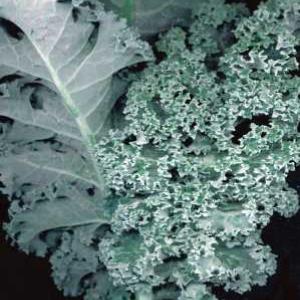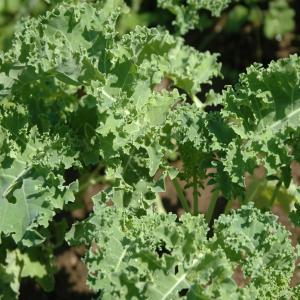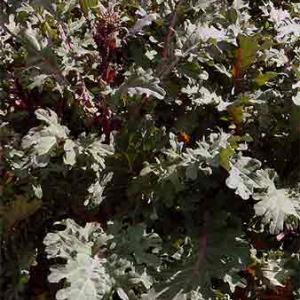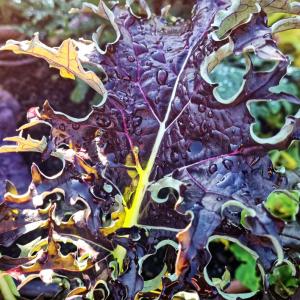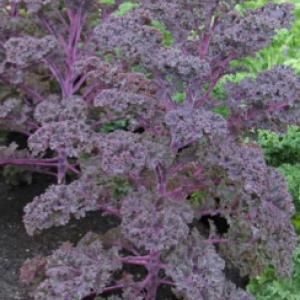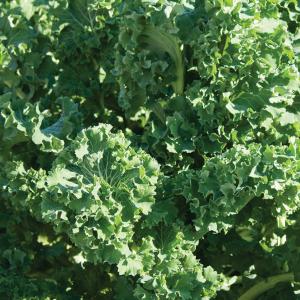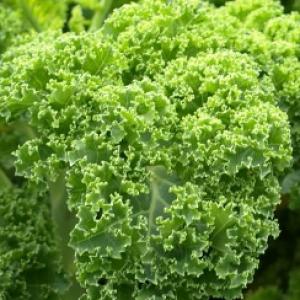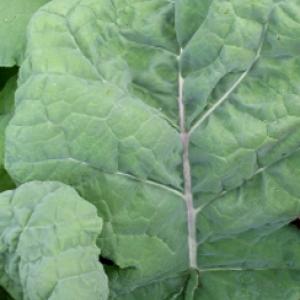Quality seeds for kitchen, cottage and native gardeners
Vegetable Seeds Catalogue
Kale
Sds/g: 300 Feed Requirements: Low Usual Seed Life: 3-4 years
Cultural Notes:
- Kale is a great cold hardy vegetable that provides highly nutritious greens through winter. It has all the great health benefits of the brassicas (refer box) and is an excellent source of beta-carotone/vitamen A and vitamin C ( 1 cup provides over 190% and 88% respectively of our daily requirement).
- Kale is relatively easy to grow and only needs a moderate amount of fertiliser and compost, just do not plant too close and keep well weeded when getting established.
- Good spacing for winter aids good air flow helping prevent any mildew and aphids.
- Plant 10 – 12 weeks prior to your first frost for a good winter crop of greens. 4-6 full grown plants should see a family through the frostiest valley or highland winters.
Problems:
- Some Dipel may be needed to control the white grubs when you see the white butterfly hovering about.
Harvest:
- Use leaves soon after they are cut as they become less flavoursome and a bit tough if left too long. As autumn and winter progress they increase in eating quality as the cold and frost tend to enhance their sweetness.
- Leaf growth in late winter and early spring occurs earlier than most other spring plants and make delicious eating. In September the seed stalks and flower heads can be used like broccoli.
Sowing periods
Our favourite favourite kale. Heavily curled, blue grey leaves that are thick and fleshy, so there is plenty of healthy substance to every mouthful. Easily grown in the vegetable garden or as an ornamental foliage plant, it is a delicious winter vegetable, Young, tender and leaves can be used raw in salads. Mature leaves can be used in stir fries, pies, soups, steamed or for a full flavoured palak paneer. Steam and freeze leaves for later use. 500 seeds
A mighty fine, nutritious kale that handles multiple harvests. High yielding with frilled and feathered leaves, it is considered a cousin to the ‘Red Russian’ variety. Young leaves are particularly sweet and can be added raw to salads. Holds well through winter with frost and snow improving its flavour, sweetening the leaves further. Use fresh, in pies, stocks, steamed with lemon juice and pepper or add to your green smoothie. 500 seeds.
This vigorous and handsome ‘cut and come again’ vegie is loaded with vitamins and minerals. Its curly, red-green leaves also make this an easy-to-grow ornamental addition to the potager garden. Its tender sweet and mild flavour is ideal for salads when small or excellent steamed greens. Sweeter and more tender than other kales during warm weather. Frost and snow improve its flavour. 500 seeds.
This Russian/Siberian kale has distinctive dark red, serrated edges (looking like it has been marinated in a cab-sav!!) The young leaves are tender and mild flavoured, making them a hit for salad mixes where the colour and texture help fill out a salad. The underside is a cream colour, so it is very striking on the curled edges. Reputed to have an iron content up to ten times higher than for other kale varieties. Frost and snow improve its flavour. 250 seeds.
A stunning kale that looks and tastes great in the veggie patch. It has a dark reddish-purple stem and leaf vein. The leaf is dark with a reddish tinge. The baby leaves can be harvested to eat raw in salads or leave to maturity to use steamed, in stir-fries, soups, pies….. Frost and snow improve its flavour.
A true Siberian kale! The Brassica napus varieties are more tender and milder in flavour than the traditional European kale, B.oleracea, which makes the younger raw leaves better for use in salads. Older leaves are used steamed, stir fried, in pies and green smoothies. In spring the flower head sprouts are used like broccoli raab, raw or steamed. A tall, heavy yielding plant with tender curly, blue-green leaves. Frost and snow improve the flavour. 500 seeds.
A fabulous kale, with fine curly leaves and high yielding. The leaves are so tender that they can be chopped finely and added to salads. Holds well through winter and one of the last to bolt to seed once spring hits. Frost and snow improve its flavour, sweetening the leaves further. Use fresh, in pies, stocks, steamed with lemon juice and pepper or add to your green smoothie. 500 seeds.
A strong growing kale that is very hardy. Also known as ‘Hungry Gap’ kale as it grows to 1.2-1.5 m with plenty of leaves that can be harvested throughout winter and early spring. The leaves are blue-grey in colour and rich in vitamens A, C and K and anti-oxidants. Handles a range of conditions, including poor soils (however it’s much more productive in fertile soils). Frost and snow improve its flavour. 400 seeds.
Also known as 'Cavolo Nero'. A highly nutritious green that is popular in central Italy for its use in soups and stews, especially through the winter months. The leaves grow to 30 cm long and 5-8cm wide, are dark green and have a heavily savoyed /crinkled appearance. Frost and snow improve its flavour. It is not only great to eat but also very ornamental. Harvest leaves as you need them after 50 days. About 500 seeds.
